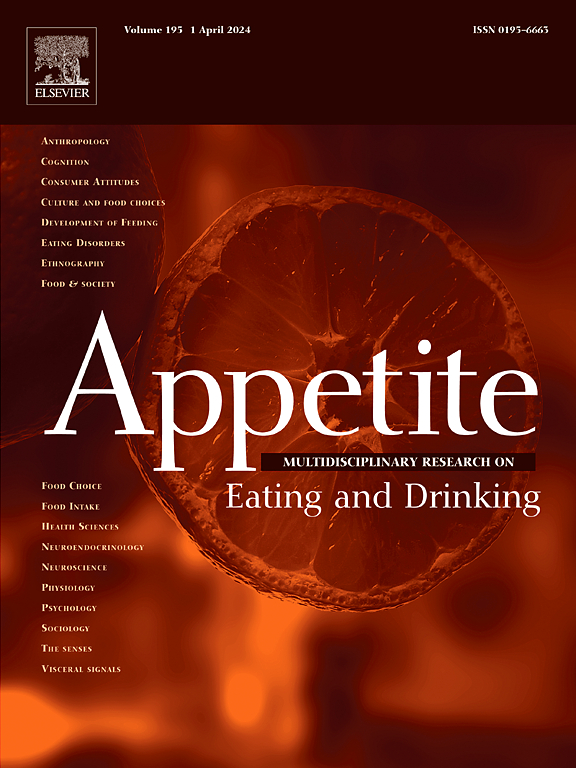Exploring comfort food cravings during pregnancy: A cross-sectional survey study
IF 4.6
2区 医学
Q1 BEHAVIORAL SCIENCES
引用次数: 0
Abstract
The current study explored “comfort food” cravings during pregnancy and compared them with a non-pregnant control group, focusing on the types of craved foods, their associated sensory characteristics and emotional valence. With an online questionnaire, participants were asked about their craved foods during pregnancy or in general through open-ended questions, followed by descriptions of the sensory and affective associations of these items using the Check-All-That-Apply (CATA) method. A total of 867 women participated int eh study, distributed across the pregnancy-diet group (197 pregnant women, 288 postpartum women) and control group (382 non-pregnant) took part. While a significant portion of participants in both groups reported cravings for confectionery/sweets, these cravings were less frequent in the pregnancy group (35.9 % vs. 62.0 %, p < 0.001). Non-citrus fruits were more commonly craved during pregnancy than in the control group (29 % vs. 13 %, p < 0.001). The sensory characteristics of cravings showed that both groups favoured ‘sweet’ and ‘salty’ foods, but the pregnancy group exhibited a marked preference for foods described as ‘cold’ (29 % vs. 13 %, p < 0.001), while the control group preferred ‘warm’, ‘creamy’, or ‘thick’ foods. The most frequently selected descriptors for the Emotion-CATA were ‘satisfied’, ‘happy’ and ‘pleasant’ across both groups, although the control group were more likely to associate comfort foods with ‘guilty’ (19.5 % vs 11.7 %, p < 0.001). These findings suggest potential alterations of chemosomatosensory functions associated with pregnancy and underscore the importance of understanding these cravings. Recognising the role of comfort foods on dietary choices during pregnancy can help us develop dietary strategies that can help mitigate the negative health impacts of comfort food consumption during pregnancy and highlight the importance of emotional and psychological support during this period.
求助全文
约1分钟内获得全文
求助全文
来源期刊

Appetite
医学-行为科学
CiteScore
9.10
自引率
11.10%
发文量
566
审稿时长
13.4 weeks
期刊介绍:
Appetite is an international research journal specializing in cultural, social, psychological, sensory and physiological influences on the selection and intake of foods and drinks. It covers normal and disordered eating and drinking and welcomes studies of both human and non-human animal behaviour toward food. Appetite publishes research reports, reviews and commentaries. Thematic special issues appear regularly. From time to time the journal carries abstracts from professional meetings. Submissions to Appetite are expected to be based primarily on observations directly related to the selection and intake of foods and drinks; papers that are primarily focused on topics such as nutrition or obesity will not be considered unless they specifically make a novel scientific contribution to the understanding of appetite in line with the journal's aims and scope.
 求助内容:
求助内容: 应助结果提醒方式:
应助结果提醒方式:


